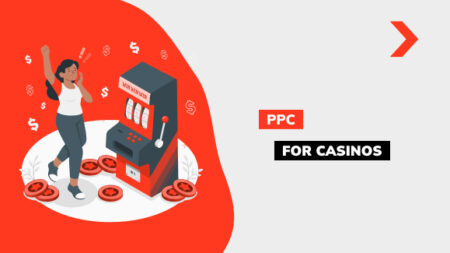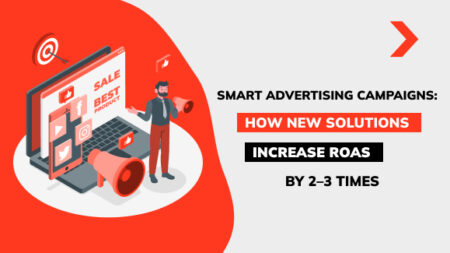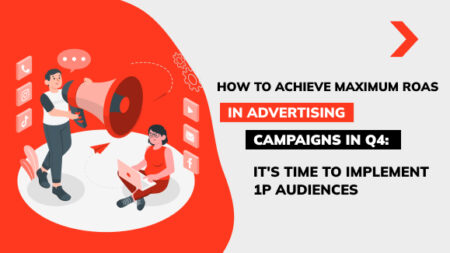PPC Marketing Strategy
Once you know your marketing goals for a business, you need a strategy to help you achieve them. Developing an effective PPC campaign requires meticulous planning and testing to optimize results. For this, carefully consider a target audience and how to craft compelling ads to capture their attention. By strategizing how best to showcase the business online, you establish the foundation for a prosperous digital presence.

Furthermore, continual refinement remains crucial — monitoring performance highlights what resonates and unseen opportunities yet untapped. This material will impart knowledge on maximizing profits through pay-per-click advertising. Its advantages become clear when leveraging real-time auctioning to engage customers at the precise instant motivation strikes. What intrinsic features wield such influence? Exploring these facets in depth unveils advertising’s full potential to shape demand and spur growth for your enterprise.
What is ‘PPC’ in digital marketing?
PPC in digital marketing is a model that regulates payment per user click on an advertisement. A PPC service is essential for driving organic website traffic growth. It not only facilitates active business promotion but also helps attract a broader audience and achieve specific goals, such as maximizing customer conversions and increasing revenue. By utilizing additional online promotion channels — such as professional SEO, social media, email marketing, and more — along with crafting creative ad campaigns through keyword selection and other tools, businesses can target specific markets and audience interests.
Definition & Role in Digital Marketing
Google ads are an Internet marketing payment model. Advertisers make a payment each time that their ad is clicked. In essence, It is about getting people (visits) to the site by buying them, not earning them in any way. PPC plays a central role in broader digital marketing and provides immediate traffic and measurable returns. This immediacy allows businesses to develop their strategies in real-time and adjust initiatives accordingly.
Common PPC Mistakes to Avoid
One of the most common mistakes in pay-per-click advertising is poor targeting, overly broad keywords, and failure to analyze campaign results. Experts emphasize the importance of accurately setting up the audience, selecting relevant ads and keywords for it, and regularly monitoring the performance of online advertising to optimize the budget.
Poor Keyword Research
This is one of the major mistakes in PPC advertising that our experts always strive to prevent. Using overly broad or irrelevant queries can lead to poor-quality traffic and inefficient budget spending on search engine marketing overall. Specialists carefully analyze queries, consider user intent, and regularly update the list of keywords.
Overlooking Ad Testing & Optimization
Without proper control over ad testing and optimization, the results of digital advertising campaigns can be poor. Therefore, experts regularly test different ad variations and analyze results, which are crucial for improving campaign effectiveness. They conduct A/B tests, monitor key metrics, and continuously make improvements to increase the profitability of advertising efforts.
Neglecting Landing Page Experience
This is a common mistake in PPC advertising that experts work to avoid. Even if the ad attracts users, a poor experience on the business’s website can significantly reduce conversions. It is essential to ensure the landing page is user-friendly, fast, has a clear call-to-action, and matches the expectations set by the ad.
Mismanaging Bidding Strategies
Poor bidding decisions can lead to inefficient budget spending. For example, using automatic strategies without considering business specifics or outdated bids can lower performance indicators during the campaign. Therefore, specialists regularly analyze efforts and adjust bids according to objectives and competition.
Benefits of PPC Marketing
Some of the advantages of PPC marketing include:
Simple Entry: Contrasted with SEO, which can take some time for new traffic to see the site, PPС, once set up, can produce traffic quite rapidly.
Data-backed Decisions: All initiative elements can be measured and tracked in PPC, which leads to data-backed decisions.
Ad Spend: You have complete control over the budget and can choose to spend as little or as much as you want, with daily or monthly caps.
Targeted marketing advertising initiatives can be adjusted easily by location, keywords, and the behavior of the users online, making brand and message marketing to specific groups easier.
Core Concepts
Keyword research, bid management, ad quality score, and target action tracking are all core concepts in PPC digitalization. Dynamic elements for targeted messaging provide the essential tools for advertisers to reach the right customers, with whom they can coordinate their ad messages, ensure proper targeting with a specific audience, and optimize ad placement and performance based on clickthrough rate/target actions.
These key pieces of knowledge will allow marketing professionals to determine where to spend budgets, how to refine their ad messages and accomplish initiative goals more effectively in a landscape that is ever more active and full of competition.
Common PPC Ad Formats (text, image, video)
Some of the more common PPC formats are text ads, shown on search engine results pages (SERPs) – which they are often referred to as — and text advertising, shown on many web pages and domains. A text advertisement is a form of advert shown on search engine sites in response to a search query and is served while the user is performing a search.
Additionally, Image ads that primarily consist of visual content in the form of images or Image promotions are visual ads that appear within the product images in the different photo view modes, as well as videos in the Photos section and other places.
Each medium has its leverage point for winning over your audience and inspiring them toward your marketing goals — traffic, branding, or compelling viewers to visit the offline or online product or e-commerce store.
These formats are chosen by marketers depending on the preference of the audience, their objective in their campaign, and the capabilities of the ad platforms to maximize ad performance and bolster overall campaign success.

Building Your PPC Strategy
What to do first when putting together a PPC strategy: Create an effective PPC strategy through careful planning and thoughtful implementation. Fundamental ones are having clear, measurable campaign goals set, having done thorough keyword research, optimizing bids, and writing compelling ad copy. Optimize the ROI and achieve business objectives by ensuring audience targeting, ad relevance, and conversion tracking. Ongoing evaluation and optimization are key to keeping up with market trends and optimizing initiative performance.
Set Up Campaign Goals
Before embarking upon a PPC campaign, it is imperative to delineate lucid goals. These could encompass heightening brand familiarity, propelling viewers to the website, or maximizing transactions. Establishing distinct aims aids in forming the strategy and furnishes benchmarks for gauging the accomplishment of your initiative.
Illuminating these goals beforehand ensures that the Google ads initiatives are concentrated and harmonized with your marketing aims.
Targeting the Right Audience
It is the identification of demographics, interests, online behavior, different levels of affinity, and price levels that allow you to properly segment the audience. Information on demographics like story age gender, and location are often the minimum re. Interests tell what one likes and what one’s hobbies are that informing the personalized ads. However, we also know that online behavior, such as browsing and purchase, is a powerful predictor of consumer intent. By segmenting an audience, you can create more tailored campaigns that cater to different types of customers, which will increase your engagement and success rates in PPC digitalization strategies.
Creating Effective Ads
There are multiple major elements needed in creating effective ads, such as:
Compelling Messaging: There is strength in numbers, so to speak. When writing for an audience that resonates with a target customers is not only clear and persuasive, it touches on the vital need.
Visual Appeal: Capture viewers’ attention through high-quality images or graphics, which convey the point visually and reinforce what you are saying textually.
CTA: Give viewers a strong direction with which they can immediately engage the request
Relevance: If an ad’s content aligns with the viewer’s interests or current needs and is what they’ll find engaging, then make sure you know that.
Write Clear & Persuasive Ad Copy
Compelling, clear ad copy is imperative to capture audience’s attention and drive action. Word your offer in a way that presents and sells very well. Focus on one or two special benefits, and make a compelling call-to-action to capture their interest immediately. When the value proposition is in your messaging, it also makes it simple and straightforward to the audience, allowing them to understand a solution much quicker, which in turn means your audience is much more likely to click and convert.
Research & Use Relevant Keywords
Relevant keyword research entails finding the search keywords and phrases that match the search needs and interests of my readers. You will urgently find one, with a full search campaign volume but also highly pertinent to a business offerings. Selecting keywords that suit the product or service best is key in wielding pay per click ads.
Choosing the Right Ad Format
An Ad format that will affect the way you communicate:
Text Ads (Simple and clear text advertising that is precise and powerful for direct messaging and getting target actions)
Image Ads — Tap the power of visuals to catch the eye and better communicate brand essence or product benefits. They are always aesthetic and invoke some sort of feeling.
Video display Ads: Appeal to an audience through engaging video, offer a usage scenario, or serve up useful information. They can do wonders for engagement rates and success rates as well.

Text Ads
An effective ad should grab attention, generate interest, prompt action, and resonate with the target customers.
Creating an Effective Ad:
- Headline:
- Bright and attractive (up to 30 characters)
- Contains the keyword
- Reflects the essence of the offer
- Sparks interest and encourages reading
- Description:
- Brief and informative (up to 90 characters)
- Lists the main benefits
- Includes a call to action (CTA)
- Answer the question, “What will I get?”
- Visual Elements:
- High-quality and relevant images or videos
- Match the overall style and tone of the ad
- Ad Extensions:
- Use additional elements (phone number, address)
- Audience Alignment:
- Use language and imagery understandable to the audience
- Consider the interests, needs, and characteristics of your target customers
- Make the ad relevant to their search queries
- Call to Action (CTA):
- Clear, concise, and action-oriented
- Tells the user what to do (visit, buy, learn more)
- Place the CTA in a noticeable spot
- Testing and Optimization:
- Regularly test different ad variants
- Track performance metrics (CTR, target action
- Optimize ads based on the data collected
- Use the most effective variants
Additional tips:
- Use numbers and symbols to highlight text
- Add customer reviews
- Create a sense of urgency (limited-time offer, discount)
- Use humor or intrigue if appropriate
- Follow the rules and requirements of the advertising platform
Image & Video Ads
Image Ads: Make good use of the picture’s attractiveness. The images must serve a message nicely and remain appealing to the target audience. Employ clear visual images that aid your ad copy in serving its purpose and that transmit the message quickly.
Video Ads: Use exciting content to involve your viewers. Tell an interesting tale, show a product or the praises a service. If a company provides excellent value for money, this could be clarified through video demonstrations.
Setting Up Your PPC Campaign
Google Ads Creation (step-by-step guide)
- Clarify Goals: What is it that you campaign? To raise brand visibility? Produce more website traffic? Or make target actions (sales, signups)?
- Recognize Your Audience: Who is your target audience? Demographics, interests, and Internet behavior will impact who can be targeted (both in general and specifically) and make them more open to certain types of offers based upon their past user experience.
- Select A Platform: For different goals and audiences, search engines (Google Ads), social media (Facebook Ads), or other networks may be preferable.
- Write Effective: Ads are concise, and the benefits featured in advertising copy can be written down in a single adjective. Use keywords that are relevant to your product. And powerful, tempting images get attention.
- Set Budget & Auctioning: Find out how much you’re willing to spend and how much you’re willing to bid for a click or an impression. When auctioning for a position in the search ads results, that depends largely upon how much competition there is and what they’re willing to pay.
- Aim & Measure: Aim the ads at the right audience and track campaign performance closely to maximize success.
Other Platforms Overview (Facebook Ads, Bing Ads)
In addition to Google Ads, trying other PPC platforms and Facebook Ads or Bing Ads can dramatically enhance the marketing strategy. Every platform has its unique targeting features as well as opportunities for reaching different audiences.

Bid Management Tactics
One key idea in this type of advertising is creating a bid strategy. We need to comprehend the types of PPC strategies and the characteristics that will make them work. Your advertising campaign strategy is premised on its success.
Manual vs. Automated Bidding
When deciding between manual and automated auctioning, you must consider the PPC campaign goals, expertise, and size. Here’s a breakdown of both.
You can better the chances of target actions and clicks with Automated Bidding, but Manual Bidding might be best for brand awareness. Automated auctioning needs a good amount of campaign data to operate most effectively. In other words, the best method of all could be a mix. You can even begin with manual auctioning to control cost-per-click and get a base, and then move on to automated auctioning when campaigns are well-seasoned.
Bidding for Reach vs. Conversions
How to bid? Depending on where an ad campaign is at and what the goal of your sales funnel is. In general, reach allows you to maximize, but the optimizer will always be auctioning for reach (not any CPA or CPC), so it’s a good tactic we recommend. Perfect for brand awareness campaigns. Bidding for target actions is great for ad campaigns that have a clear conversion goal (e.g., get more sales and get more sign-ups).
Landing Pages
Web pages are generated uniquely for marketing or promotional crusades. The primary intention of a landing page is to transform visitors into prospects. A landing page may fail if it does not adequately catch the attention of site visitors or inform them to take the sought-after measures.
Create High-Converting Landing Pages
Build beautiful and great Landing Pages.
- Ensure you have a powerful headline that conveys the value and strikes the visitor’s interest.
- Add suitable images or videos to your profile to give rich and engaging content.
- Craft short, compelling copy that articulates the benefits of your offer and speaks to the visitor’s problems.
- Opt for a large headline, which is reinforced by a CTA button.
- Easy-to-use interface or design.
- Add testimonials and reviews to the site to establish trust with your visitors.
- Make sure the page load is speedy, because high bounce and loft success rates are the results of a slow-loading page.
- Experiment with testing different components of the landing page, such as headlines and images in CTAs, for a better understanding of what converts the most and drives success rates higher over the time.
Track & Optimize Conversions
Specify the exact conversion event. A metric could be that of making a purchase, signing in and downloading or whatever other action you wish to measure. Select the right tools to accurately track target actions – Google Analytics, Facebook pixel, and target page tools. Keep an eye on key metrics that indicate how well the website is doing. Use data and insights. Refine & test headlines, images, CTA, and forms for improved target actions. Create a copy of the original page and test different variations of it to see which changes can perform better. Review data constantly, and test new concepts and tweaks to keep improving the success rates of your page.
Implementing and Optimizing PPC Strategy
A well-devised PPC approach can propel targeted traffic to the site, produce high-quality prospects, and boost earnings. On the other hand, to accomplish this, it is essential to execute a strategic approach and persistently optimize your initiatives.
PPC Management
PPC Management requires strategic planning and expert implementation. Goals must be specific, quantitative measures of success achieved through actionable tactics. Advertising employs compelling, persuasive messages tailored for each audience. Cost-effective auctioning optimizes budgets to generate qualified leads. Negative keywords avoid wasted investment in irrelevant traffic. Conversion analytics reveal what resonates and guides profitable progression.
Measuring Success & ROI
Closely monitor target action metrics like success rate and cost-per-click acquisition to ascertain a campaign’s efficacy. Key indicators encompass return on ad spend and how many target actions transpire relative to expenditure. Analyze these factors to gauge performance accurately.
Inspect the campaign’s cost framework thoroughly. That includes ad costs and auctioning tactics. Where can prices be reduced while preserving or improving results? Adjusting the strategy could strengthen productivity and worth.
Contrast earnings created to total costs incurred to decide a campaign’s financial return. Leverage such insights to optimize the strategy and maximize ROI, confirming funds are utilized prudently. Continually refining tactics allows top benefit for the volume invested.
Key Performance Indicators (KPIs) for PPC Campaigns
It is crucial to monitor as well the metrics below are Key Performance Indicators (KPIs) for PPC campaigns. Success Rate is the proportion of users who have accomplished a fitted action. Per Conversion (CPC), which works out how much it costs for each target action. Return on Ad Spend (ROAS) measures the revenue of an advertising campaign versus its costs. Click-Through Rate (CTR) shows engagement on ads. Side Ranking these KPIs helps you optimize and ensure you have a profitable effective PPC strategy.
Advanced PPC Strategies
Progressive search ads strategy refers to using advanced techniques to gain better performance for one’s advertising message. Tactics often adopted in pursuit of this goal include sophisticated targeting options, dynamic advert formats, and complicated auctioning marketing strategies that can outdo competitors or complete campaigns with more than expected efficiency.
Remarketing & Retargeting
Retargeting is about showing adverts to site visitors who have browsed the pages or interacted with your ads roving crew. This strategy helps you win back those potential customers who didn’t pass the first step. Remarketing, however, involves creating personalized follow-up campaigns to re-engage those same visitors based on their previous interactions with your brand.
For example, To increase sales, the company decided to remarket their products to a younger demographic through social media campaigns.
Shopping Ads for Ecommerce Success
Using shopping adverts is crucial for any ecommerce firm keen to improve product visibility and increase the sales funnel through its website. In the search results, these adverts show product images, prices, and merchants’ names alongside text links just waiting for everyone’s click. To optimize the shopping ads, you want your product data to be accurate, prices competitive, and images attractive. Thanks to shopping ads, ecommerce firms can attract higher-intent shoppers, get better click-through rate, and, in the end, increase revenues.
How to Create PPC Marketing Plan
Make a List of Business Goals. Work out what you want your PPC to achieve for the firm. A good plan, from defining clear goals and target audiences to planning your campaign structure and establishing measurable metrics, will guide the campaign execution and make the PPC efforts an ROI-positive venture.
Define Goals, Target Audience, & Budget
Are you looking to generate more traffic to your target pages, get more leads, or sell more products? How do you target the right people with ads based on their demographics, interests, and activities? Create a feasible budget to match the PPC goals while allowing effective campaign delivery.
Outline Campaign Structure & Timeline
Building a campaign structure plan showing how the campaign should be organized, with ad groups, target keywords, and creatives. Create a timeline that details important milestones like launch dates, continuous optimizations, and campaign check-ins. A structured methodology allows for clarity and accountability throughout the lifecycle of the PPC campaign.
Set Success Metrics
Your measurable success metrics — i.e.,, goals (target action, ROAS, CPA) will act as future statistics to measure campaign performance and examine whether the PPC efforts are an endeavor. Typically, you can monitor and adjust these metrics over time as you learn which ones the market responds to best to get the best results.
FAQ
What is the PPC strategy?
A pay-per-click (PPC) strategy is when careful planning and implementation drive a paid advertising campaign on Google Ads. The idea is to lead traffic back to websites by offering keywords that are known to interest your target audience and only pay on an impression (or sale) basis if the user clicks on the ad.
What is PPC in marketing?
PPC in marketing is a form of advertising in which a charge is applied every time an ad gets clicked by users. With PPC campaigns, targeting could be highly refined to get quick traffic and target actions.
What is PPC in terms of marketing?
PPC is a paid advertising strategy. It focuses on increased traffic for advertisers’ homepages and target pages but does not always link back to quality web pages with good content behind them. However, they can work together as part of a broader marketing campaign offering mutual support or overlap where appropriate between PPC strategies.
What is an example of a PPC?
A notable example of Google ads is Google Ads. Here, the advertiser bids on words and phrases that match their product or service exactly such that link advertisements are displayed above or to the right of search results when one makes an online query. For example, Pay Google each time someone clicks through your ad.





